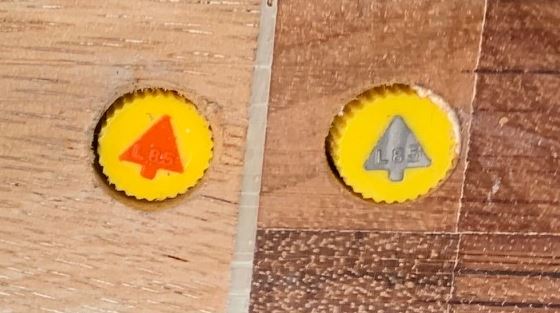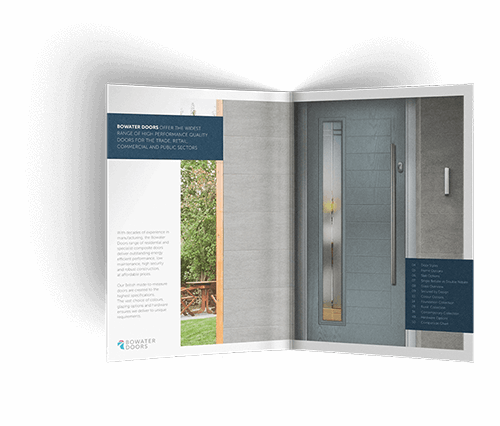FD30 Fire Doors – Frequently Asked Questions
Fire Doors are a vital component in any fire safety strategy. Here are a number of the most commonly asked questions we receive regarding Bowater's FireShield range of FD30 composite fire doors.
CANT FIND YOUR ANSWER - ASK US A QUESTIONA fire door is a specially designed door set that has been tested to slow the spread of fire and smoke.
An FD30 fire door performs for at least 30 minutes to allow a building to be evacuated in the event of a fire.
An FD60 fire doors offer 60 minutes of fire resistance and they are often used on higher floors of residential and commercial buildings.
Unlike standard doors, fire doors have specialist safety features such as intumescent strips around the door and hardware.
Intumescent materials expand when exposed to heat and it’s this expansion that seals the door to slow the spread of fire and smoke.
The door slab and fire door frame are also made from fire-resistant materials to ensure that they all work together to create a life-saving fire protection system.
In order for fire doors to be effective, they must be kept closed at all times.
Our fire door range is supplied with a self-closing mechanism to ensure that the door always returns to a closed position.
Fire doors must never be wedged open as it will offer no protection against fire and smoke unless it is closed.
Fire doors are marked with unique certification labels or plugs which are usually located at the top of the door on the edge that meets the frame. These plugs are coded so you will be able to tell if it’s a 30-minute fire door or a 60-minute fire-rated model.
In line with the Building Safety Bill, the nominated ‘Accountable’ or responsible person for the building should have a clear understanding of the location and performance of fire safety features.
We recommend that a full fire risk assessment should be carried out by a trained specialist to ensure that each door is suitable and will provide the recommended level of protection.
The fire door building regulations in the UK, Approved Document B, states that all fire door sets should be classified in accordance with BS EN 13501-2 and tested to BS EN 1634-1.
When it comes to fire safety, the installation and maintenance of a fire door are as critical as the manufacture and original specification of the door set.
Fire Risk Assessors often find poorly installed fire-rated doors, therefore all fire doors should only be fitted by qualified installers and regularly inspected and maintained to ensure the fire resistance of the door is not compromised.
Composite doors can be made of a number of different materials. our fire door was designed using multiple component materials such as a specialist fire-rated frame and a solid Agrifiber Core door slab.
All of these materials were selected for their fire protection properties and low maintenance qualities. Bowater Doors’ FD30S is sold as a doorset as each element has been tested as a system to offer a safe and consistent solution.
In addition to the BS EN 1634-1 test, the best fire door manufacturers are members of a third-party certification scheme such as the BM TRADA Q Mark. These manufacturers are regularly audited to ensure that the performance and quality of the product remain consistent.
Fire doors should always be subjected to regular fire door inspections and maintenance to ensure that they are still in perfect working order.
Areas with high footfall will need replacing sooner due to the increased usage.
Certain door slabs have an area that can be trimmed but this should not be done after the door has left the factory.
We can offer a range of bespoke door sizes and these should be confirmed at the point of specification or order.
No one other than the manufacturer should cut or drill a fire door once it has left the factory. Not only will this potentially limit the performance of the door, but it will also impact the warranty.
Bowater Doors advise against painting fire doors as this classifies as a modification from the original specification and will invalidate your warranty.
Fire doors with glazed panels and top lights are available. These have been tested and manufactured using specialist heat-resistant glass.
Most fire doors have three hinges and they must be fire certified. Our fire door features four hinges for optimum performance in the event of a fire. The hinges combined with the locking system prevent the door from warping and twisting under the extreme heat and pressure from a fire.
Fire doors are often used as flat entrance doors, therefore they need to be safe and secure. FireShield features an AV2 slam shut lock to ensure that the door is always locked and ready to perform in the event of a fire.
This combined with low operating forces allows for the door to be easily unlocked and opened for evacuation purposes. Each door is fitted with an automatic closer to gently guide the door back to a closed and fire-resistant position.
Fire doors should never be modified in any way; each model has been thoroughly tested under strict conditions. All hardware should be specified in advance so the door manufacturer can supply the correct solution that falls within the test standards.
Fire-resistant front doors need to be used in flats to ensure that the main escape routes remain clear in the event of a fire. Fire-rated doors also need to be used when connecting buildings such as a garage leading into the home to protect the property if a fire breaks out.
Pick your perfect door today
Lorem ipsum dolor sit amet, consectetur adipiscing elit. Est turpis pellentesque orci faucibus. Aliquet felis massa feugiat amet sem eget volutpat nunc.


